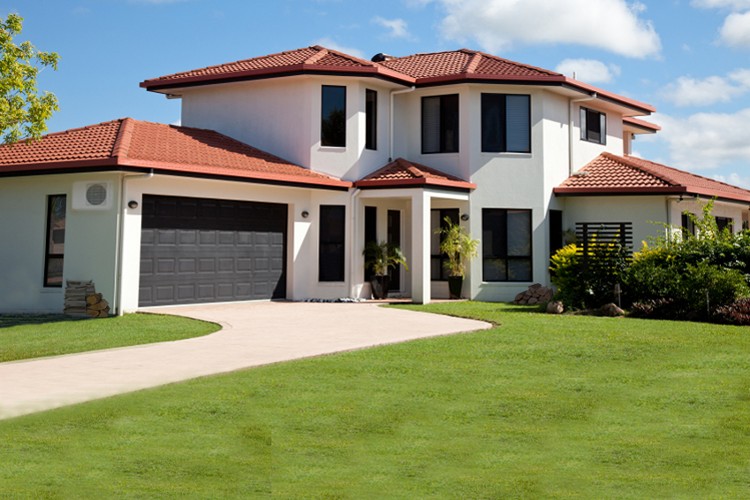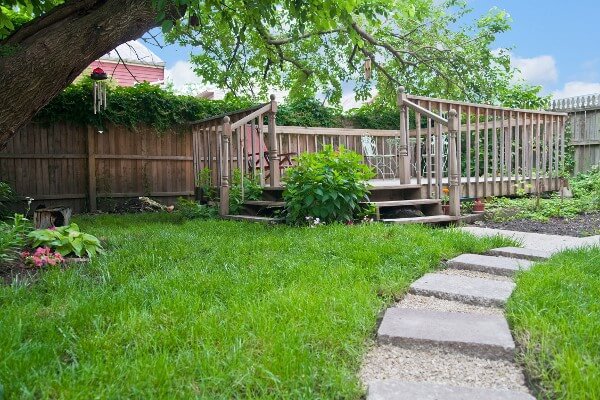DIY termite monitoring
Steps you can take to minimise the risk of termite infestation
Pest control service
Integrated Pest Management
Termite solutions
Common pest
Specialist services
Hygiene and scenting
Hygiene services
Scenting services
Space & surface treatment services
Industry & residential
My business handles food
My business doesn't handle food
MY Home services
About Rentokil Initial

Termites
Call us for a free quote on 400 820 8770 or contact us
Termites find Chinese homes particularly appetising especially in South China, but why is that? There are a number of things that can make your home attractive to a hungry colony of termites. Our termite experts bring you termite identification methods and monitoring tips on how to control termites at home to help you understand the dangers and prevent termites from settling in your property.
You're one of the few users whose browser doesn't support the interactive tool. However, you still have access to all the tips and identification methods below.

Moisture in these cosy spots will attract termites and provide access towards the food sources your home provides.
Termites can gain access through cracks and once inside the structure of your home, they can consume sources of cellulose, such as the timber structure, floor boards and wooden furnitures.
An annual termite inspection is also one of the best way to protect your home. Call 400 820 8770 now to schedule a FREE termite inspection.
Termites are attracted to moisture. Leaking downpipes draw termites towards your home by providing a source of moisture.
Moist areas make your home more attractive to termites and provide the ideal environment to live. Once termites are in your home they can consume any source of cellulose, like the timber structure, floor boards and wooden furnitures.
An annual termite inspection is also one of the best way to protect your home. Call 400 820 8770 now to schedule a FREE termite inspection.
Debris such as overgrown plants, stored goods or trash near or against your home are a food source for termites. It can become moist and conceal signs of termites entering your home.
By providing an ideal environment for termites to feed, live and travel, debris near or against your home is a danger for introducing termites to your home. Once inside, termites could gain access to the inside of your home structure without any obvious access path or signs of their presence and can cause serious damage before you are able to identify and eradicate them.
An annual termite inspection is also one of the best way to protect your home. Call 400 820 8770 now to schedule a FREE termite inspection.
Termites are attracted to moisture as it provides them with an ideal environment for living and reproduction. If your hot water system overflows, termites may be attracted to the moisture it provides and subsequently, the food sources that your home provides.
Allowing an attractant such as moisture to develop near your home provides a beacon to termites looking for a new environment to live. Once in your home termites will seek out appealing environments that have abundance of food, such as your home's timber structure, floor boards, skirting boards, furniture and even books.
An annual termite inspection is also one of the best way to protect your home. Call 400 820 8770 now to schedule a FREE termite inspection.
Like your hot water system, the moisture released from your air conditioner provides a moist environment that is very attractive to termites.
Allowing an attractant such as moisture to develop near your home provides a beacon to termites looking for a new environment to live and reproduce. Once in your home, termites will seek out appealing environments that have abundance of food, such as your home's timber structure, floor boards, skirting boards, furniture and even books.
An annual termite inspection is also one of the best way to protect your home. Call 400 820 8770 now to schedule a FREE termite inspection.
Broken roof tiles are another area that provides a source of moisture to your home, which makes it more appealing to termites looking for an environment to colonise.
Allowing an attractant such as moisture to develop near your home provides a beacon to termites looking for a new environment to live and reproduce. Once in your home, termites will seek out appealing environments that have abundance of food, such as your home's timber structure, floor boards, skirting boards, furniture and even books.
An annual termite inspection is also one of the best way to protect your home. Call 400 820 8770 now to schedule a FREE termite inspection.

Termites are attracted to moisture within the soil.
Moisture which has collected around your home's foundations due to a slope can cause cracks. From here, termites may find access points into your home via the foundations.
An annual termite inspection is also one of the best way to protect your home. Call 400 820 8770 now to schedule a FREE termite inspection.
Termites search for food sources via underground tunnels. If they find timber, such as the timber footings of your home, this can ultimately leads them to their food source, your home!
Your home's timber structure is an interconnected set of timbers. Once termites have started feeding on the first timber, they have no reason to stop and they could gain access to the rest of your home.
An annual termite inspection is also one of the best way to protect your home. Call 400 820 8770 now to schedule a FREE termite inspection.
Termites will search for food sources from underground and untreated fence posts in contact with the soil are a perfect meal for termites.
Termites will feed on the timber in your fence and can cause it to collapse. Your fence also provides a stepping stone to your home. Once termites have infested your fence they will seek out other food sources close by, which may include your home.
An annual termite inspection is also one of the best way to protect your home. Call 400 820 8770 now to schedule a FREE termite inspection.
Tree stumps not only provide a food source for termites, but also a good habitat for building a new colony.
If termites set up a colony or start feeding on a tree stump near your home, termites of Coptotermes species can migrate to your home and feed on the timber structure, skirting boards, furniture and even your books. No one wants termites close to their home.
An annual termite inspection is also one of the best way to protect your home. Call 400 820 8770 now to schedule a FREE termite inspection.
Trees are great food sources for termites. They also provide a habitat for building a colony.
Termites can cause severe structural damage to trees, which creates the danger of branches or even the entire tree falling and damaging your home or endangering your family. Besides that, once termites are in your yard, it is a short step for them to move to your home, leading to extensive and costly damages.
An annual termite inspection is also one of the best way to protect your home. Call 400 820 8770 now to schedule a FREE termite inspection.
Mulch such as decaying leaves, bark or compost keeps in moisture very well, which termites are attracted to. It also provides them with an ideal food source.
Mulch may encourage termites closer to the home and conceal possible entry points. Once termites are in your home they can consume any source of cellulose, like the timber structure, floor boards, architraves and furniture.
An annual termite inspection is also one of the best way to protect your home. Call 400 820 8770 now to schedule a FREE termite inspection.

Moisture caused by plumbing leaks and other available food sources in your kitchen will attract termites to the area.
Moist areas make your home an ideal environment for termites to live and reproduce. They will start consuming any source of cellulose in the surrounding, like the timber structure, floor boards, wooden furnitures and even books.
An annual termite inspection is also one of the best way to protect your home. Call 400 820 8770 now to schedule a FREE termite inspection.
Termite swarmers or alates fly out from their original colony to establish new ones. They will drop their wings when they land and look for a mating partner.
If termite swarmers or alates find the environment favourable to feed and reproduce, they can establish a new colony in your living space, causing extensive and costly damage to your home.
Seal cracks and gaps around your home's foundation as they can be termites access points. An annual termite inspection is the best way to identify termite activity in your home. Call 400 820 8770 now to schedule a FREE termite inspection.
Termites usually consume woods from the inside out, leaving a thin veneer of timber or paint. So when you knock on an area that has termite damages, it will sound hollow or papery due to parts (or all) of the timber having been eaten away.
Termite consume cellulose, like timber structure, floor boards and wooden furnitures, leaving them hollow. If left unchanged, this damages the structural integrity of the timber resulting in collapse.
If possible, replace the infested door or wooden furniture with termite-resistant or termite-treated timbers. An annual termite inspection is also one of the best way to protect your home. Call 400 820 8770 now to schedule a FREE termite inspection.
Cracked ceiling or walls are areas that provides a source of moisture to your home, which makes it more appealing to termites looking for an environment to colonise.
Allowing an attractant such as moisture to develop in your ceiling or walls entice termites to live and reproduce in your home. Termite can consume cellulose in your ceiling and walls, causing serious structure and costly damage.
Always seal cracks on your ceiling and walls as soon as possible.
A persistent accumulation of soil or mud-like substance against walls, door frames, windows or on floors. It can sometimes look like twigs hanging from your door or window frames.
Termites build shelter tubes made of mud, dirt and debris in order to travel to and from the food source without being seen by predators and to minimise moisture loss. This is a common indication that termites are active in your home.
Call 400 820 8770 immediately to book a FREE termite inspection to protect your home from further damage.
Termites are attracted to cellulose on wooden window frames, especially those rarely used ones.
As termites devour timber from the inside of the window frames, this can cause the window to be irregular and misshapen.
Call 400 820 8770 immediately to book a FREE site inspection to protect your home from termites.

Cracked walls or ceiling are areas that provides a source of moisture to your home, which makes it more appealing to termites looking for an environment to colonise.
Allowing an attractant such as moisture to develop in your walls or ceiling entice termites to live and reproduce in your home. Termite can consume cellulose in your walls and ceiling, causing serious structure and costly damage.
Always seal cracks on your walls and ceiling as soon as possible.
Winged termites are termite swarmers or alates that flies out from their colony to look for a mate, before setting up a new feeding and breeding site. They are sometimes mistaken for winged ants.
Termite swarmers or alates can set up a colony and start feeding on the timber structure, skirting boards and wood furniture in your home.
An annual termite inspection is also one of the best way to protect your home. Call 400 820 8770 now to schedule a FREE termite inspection.
The flooring has become spongy and springs more than usual.
Timber floorings are termite food source to build their colony. They have eaten the floors from the inside out, which can cause the floor to collapse. They can also easily spread to other areas of your home.
An annual termite inspection is the best way to identify termite activity in your home. Call 400 820 8770 now to schedule a FREE termite inspection.
If you hear sound of knitting needles clicking or running water from within the walls, it mean termites are moving within the wall structure.
Termite can damage the walls and ceiling, which could result in permanent structural damage.
An annual termite inspection is the best way to identify termite activity in your home. Call 400 820 8770 now to schedule a FREE termite inspection.